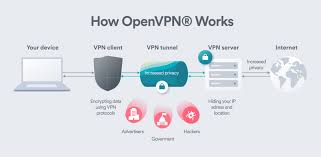Unleashing the Potential of Mobile Linux: Transforming the Smartphone Landscape
The Rise of Mobile Linux: Revolutionizing the Smartphone Industry
Linux, a powerful and versatile open-source operating system, has made significant strides in the mobile industry in recent years. With its flexibility, security, and customizability, mobile Linux is revolutionizing the way smartphones are designed, developed, and used.
One of the key advantages of mobile Linux is its ability to provide a stable and secure platform for smartphones. By leveraging the robust architecture of Linux, mobile devices can offer enhanced protection against malware, viruses, and other security threats. This has made Linux-based smartphones a popular choice among users who prioritise data security and privacy.
Furthermore, mobile Linux allows for greater customizability and flexibility in smartphone design. Manufacturers can tailor the user interface, features, and functionalities of their devices to meet specific user needs. This level of customization has led to a diverse range of smartphones running on different flavours of mobile Linux, each offering a unique user experience.
Moreover, the open-source nature of mobile Linux encourages collaboration and innovation within the smartphone industry. Developers can access the source code, modify it according to their requirements, and contribute back to the community. This collaborative approach has led to the development of new features, applications, and technologies that push the boundaries of what smartphones can achieve.
As more users recognise the benefits of mobile Linux, its popularity continues to grow within the smartphone market. From budget-friendly devices to high-end flagship models, mobile Linux is powering a wide range of smartphones that cater to diverse user preferences.
In conclusion, mobile Linux is playing a pivotal role in reshaping the smartphone industry by offering a secure platform, enabling customizability and fostering innovation. With its growing adoption and development community support, mobile Linux is set to drive further advancements in smartphone technology for years to come.
7 Essential Tips for Successfully Running Linux on Your Mobile Device
- Ensure your device is compatible with the Linux distribution you want to install.
- Back up all important data on your mobile device before installing Linux.
- Follow a reliable guide or tutorial for installing Linux on your mobile device.
- Be prepared for potential bugs or compatibility issues when using Linux on a mobile device.
- Regularly update your Linux distribution to ensure security and performance improvements.
- Join online forums or communities for support and troubleshooting tips regarding mobile Linux.
- Experiment with different applications and tools available for Linux to enhance your mobile experience.
Ensure your device is compatible with the Linux distribution you want to install.
When considering installing a Linux distribution on your mobile device, it is crucial to ensure that your device is compatible with the specific Linux distribution you intend to use. Compatibility issues can arise if the hardware components of your device do not align with the requirements of the Linux distribution, potentially leading to functionality issues or even rendering the installation unsuccessful. By verifying compatibility beforehand, you can avoid potential complications and ensure a smooth and successful installation process, allowing you to fully leverage the benefits of mobile Linux on your device.
Back up all important data on your mobile device before installing Linux.
It is crucial to back up all important data on your mobile device before proceeding with the installation of Linux. This precaution ensures that your valuable information, such as contacts, photos, documents, and settings, is safely stored in case of any unforeseen issues during the installation process. By taking the time to create a backup, you can safeguard your data and avoid potential loss or corruption, providing peace of mind as you explore the world of mobile Linux on your device.
Follow a reliable guide or tutorial for installing Linux on your mobile device.
For a successful installation of Linux on your mobile device, it is crucial to follow a reliable guide or tutorial. By adhering to a trusted resource, you can ensure that the installation process is carried out correctly and efficiently. A reliable guide will provide step-by-step instructions, troubleshooting tips, and best practices to help you navigate through the complexities of installing Linux on your mobile device with ease and confidence.
Be prepared for potential bugs or compatibility issues when using Linux on a mobile device.
When utilising Linux on a mobile device, it is essential to be prepared for potential bugs or compatibility issues that may arise. Due to the diverse hardware configurations of mobile devices and the evolving nature of Linux distributions, users may encounter challenges such as driver issues, software incompatibilities, or performance discrepancies. By acknowledging and being proactive in addressing these potential hurdles, users can navigate through them effectively and optimise their mobile Linux experience for smoother operation and enhanced functionality.
Regularly update your Linux distribution to ensure security and performance improvements.
To enhance the security and performance of your mobile Linux device, it is crucial to regularly update your Linux distribution. By staying up-to-date with the latest software releases and patches, you can protect your device from potential vulnerabilities and exploits while also benefiting from performance enhancements and new features. Regular updates not only ensure a smoother and more secure user experience but also demonstrate a proactive approach towards maintaining the health and efficiency of your mobile Linux system.
Join online forums or communities for support and troubleshooting tips regarding mobile Linux.
For assistance and troubleshooting tips related to mobile Linux, consider joining online forums or communities dedicated to this operating system. Engaging with these platforms can provide valuable insights, guidance, and solutions from experienced users and developers. By actively participating in these communities, you can enhance your knowledge of mobile Linux, resolve issues effectively, and stay updated on the latest developments in the field. Embracing the collaborative spirit of these forums can empower you to make the most of your mobile Linux experience and overcome any challenges you may encounter along the way.
Experiment with different applications and tools available for Linux to enhance your mobile experience.
To enhance your mobile experience with Linux, it is advisable to experiment with a variety of applications and tools that are available. By exploring different software options, you can customise your device to suit your preferences and needs. Whether you are looking for productivity tools, entertainment apps, or utilities to streamline your workflow, the diverse range of applications for Linux can help you maximise the functionality and versatility of your mobile device. Embracing this experimentation can lead to discovering new ways to optimise your usage and make the most out of your mobile Linux experience.








